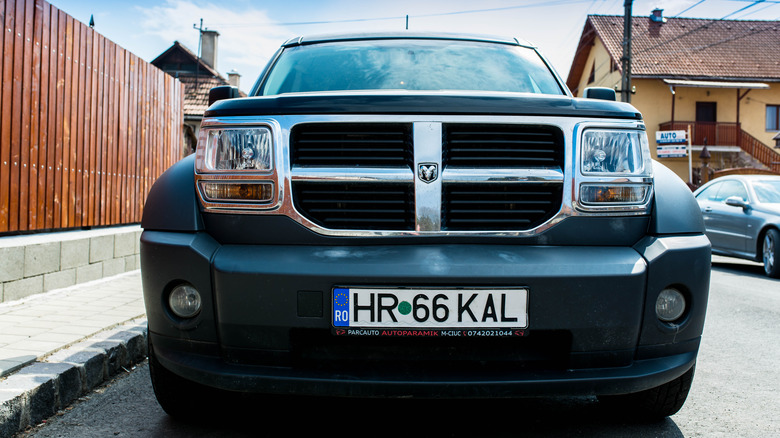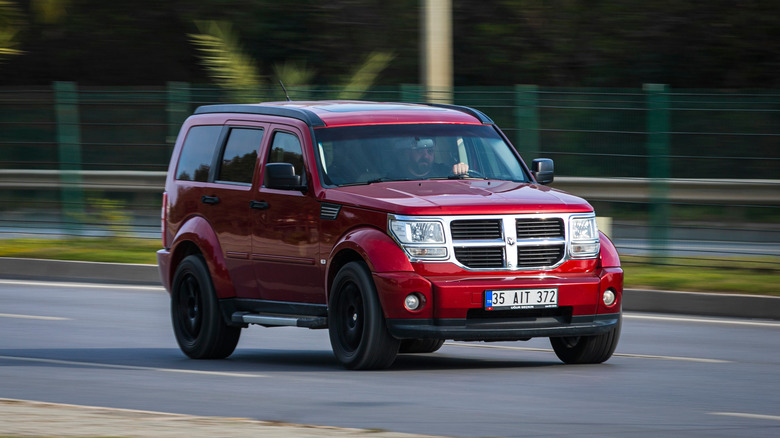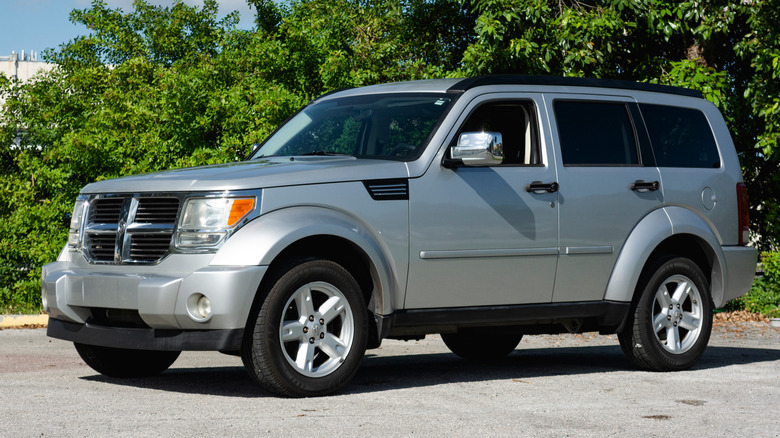
Benedek Alpar/Shutterstock
If there was a simple phrase that summed up the SUV design trends in the early aughts it was, «let’s box it up.» The boxy-body trend was all the rage at the time with a wide variety of automakers betting that such a distinct silhouette would bolster sales. That objective was at the forefront for the Chrysler Group when it revealed the Dodge Nitro in 2007. With its eye-catching, geometric shellish casing and aggressively squared-off wheels, it makes sense how the developers drew inspiration for the model’s name from the Nitro Express elephant gun cartridges.
Advertisement
Unfortunately Dodge’s compact SUV lasted only four years before the brand decided to pull the model from production in 2011. While arguments can be made that the Nitro should not have been discontinued, especially in light of the resurgence of popularity for the smaller (and boxier) SUV, there were a number of compelling factors such as cheap building materials and low profit margins that caused interest in this model to fizzle out. Even reviewers were particularly critical in their assessment of the SUV’s performance, with Consumer Reports asserting that «overall the Nitro has little going for it.»
Poor quality in materials and profitability were just a few reasons for the Nitro’s termination

Everyonephoto Studio/Shutterstock
In many ways the Nitro was developed as a close mirror to rival GM-made Jeep Liberty, also known as Jeep Cherokee, especially in regards to the configuration of the model’s parts and engine capacity. Yet, unlike the Liberty with its spacious all-terrain appeal, the Nitro remained strictly a highway-only commuter SUV with reduced cargo space of 42 cu.ft. Once out on the road the Nitro was not easy to maneuver since the overall build was so bulky and low to the ground. Despite the fact that the model was targeting the compact SUV market, it still had less than stellar efficiency with only an 18.5 gallon fuel capacity. Defective power-locked doors, electrical malfunctions, and an interior adorned in low-grade plastic were some of the numerous issues that prevented the Nitro from capturing a popular consumer base.
Advertisement
After Chrysler sold 74,825 units in 2007, the total number of purchased Nitros dropped by more than half the following year and would continue to steadily decline until the end of its circulation. The public was so unenthusiastic about the Nitro and its outmoded features with each iteration that by November 2011, only 1,661 units were sold.
Will there be a revival of the Nitro in 2024?

Johnnie Rik/Shutterstock
Over the decades Dodge has proven that it has the resources and capacity to create winning SUVs. One only need look at the lengthy track record of the Durango to see that the brand is more than capable of delivering on its promises time and again. Yet when the small SUV niche re-emerged as one of the most competitive segments in the automotive market, Dodge was left on the sidelines without any skin in the game.
Advertisement
In 2023, Dodge launched a modernized version of the Hornet as its new compact contender and replacement for the Nitro. However, its fairly common for automakers to release multiple models within the same segment to provide a broader range of choice for customers. The Nitro could one day have a redeeming second-act, but it would need to learn the lesson from the legacy of Dodge’s classic models – that the key to a model’s success lies in achieving superior substantive design quality found by thinking well outside the box.